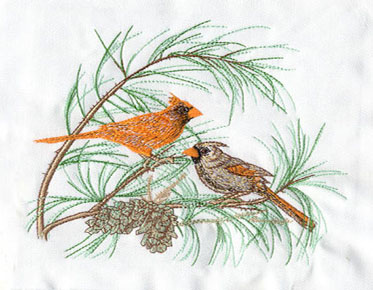The origin and evolution of screen printing - Eagle Digitizing is here to assist you
Screen printing, also known as silkscreen printing, is a printing technique that has been used for centuries to create images and patterns on a variety of surfaces. It involves using a mesh screen to transfer ink onto a substrate, creating a design that is both precise and durable. Today, screen printing is used in a wide range of industries, from fashion and textiles to electronics and packaging. But where did this technique come from, and how did it evolve over time?
In this article, we’ll take a quick look at the history of screen printing, from its origins in ancient China to its modern-day applications.
The earliest known form of screen printing can be traced back to China, where it was used to print images on silk fabrics as early as the Song Dynasty (960-1279 AD). The process involved stretching a piece of silk over a wooden frame, and then coating it with a layer of wax or other water-resistant material. The design was then drawn on the surface of the fabric using a brush, and the wax was removed from the areas where the ink was to be applied. The fabric was then dipped into a vat of ink, and the ink was forced through the mesh onto the fabric using a squeegee.
Over time, screen printing spread to other parts of Asia, including Japan, where it was used to create stencils for dyeing fabrics. In the 18th and 19th centuries, screen printing began to be used in Europe and the United States as a method for printing on paper and other materials. One of the early pioneers of screen printing was the Englishman Samuel Simon, who received a patent for a screen printing machine in 1907.
In the early 20th century, screen printing became more widely used in the commercial printing industry, especially for printing signs, posters, and billboards. Screen printing allowed for large-scale printing of high-quality images and was particularly useful for printing text and images in multiple colors. During World War II, screen printing was used extensively by the military to produce banners, flags, and other printed materials.
In the 1960s, screen printing became popular among artists and designers, who used the technique to create prints and posters that reflected the counterculture and political movements of the time. Screen printing allowed for greater artistic freedom and experimentation than traditional printing methods, and its popularity among artists helped to push the boundaries of the medium.
Today, screen printing is used in a wide range of industries and applications, from printing T-shirts and other apparel to creating circuit boards and other electronic components. Advances in technology have made screen printing faster, more efficient, and more precise than ever before, and new materials and techniques continue to expand the possibilities of the medium.
In conclusion, screen printing has a long and fascinating history that spans centuries and continents. From its origins in ancient China to its modern-day applications, this technique has evolved and adapted to meet the changing needs of society. Whether used for commercial printing, artistic expression, or industrial manufacturing, screen printing remains a vital and versatile tool in the world of printing and design.
If you are unfamiliar with screen printing, you can contact the professionals at Eagle Digitizing. They offer
24/7 service at reasonable prices with guaranteed quality. They will definitely
help take your business to the next level.



